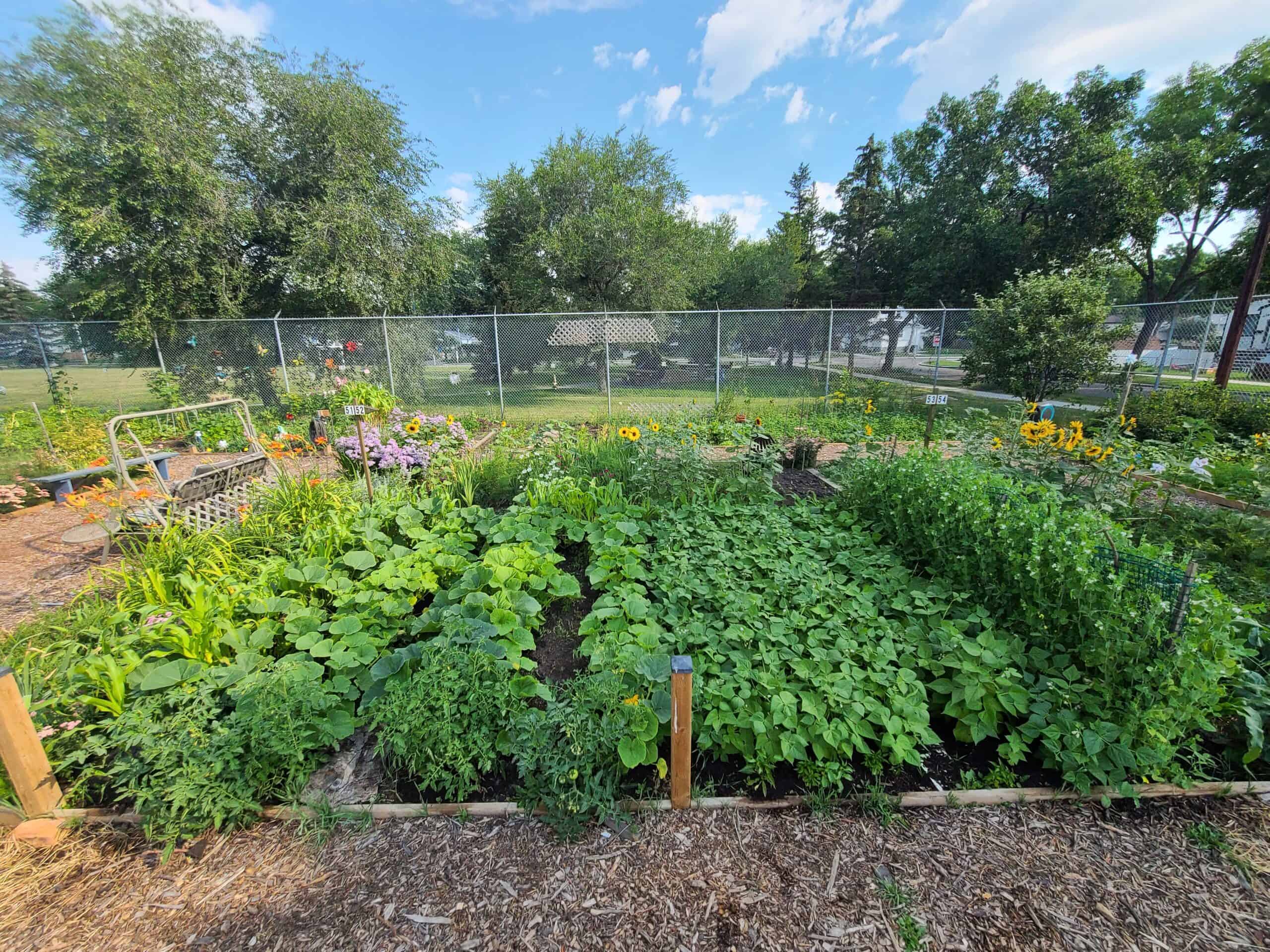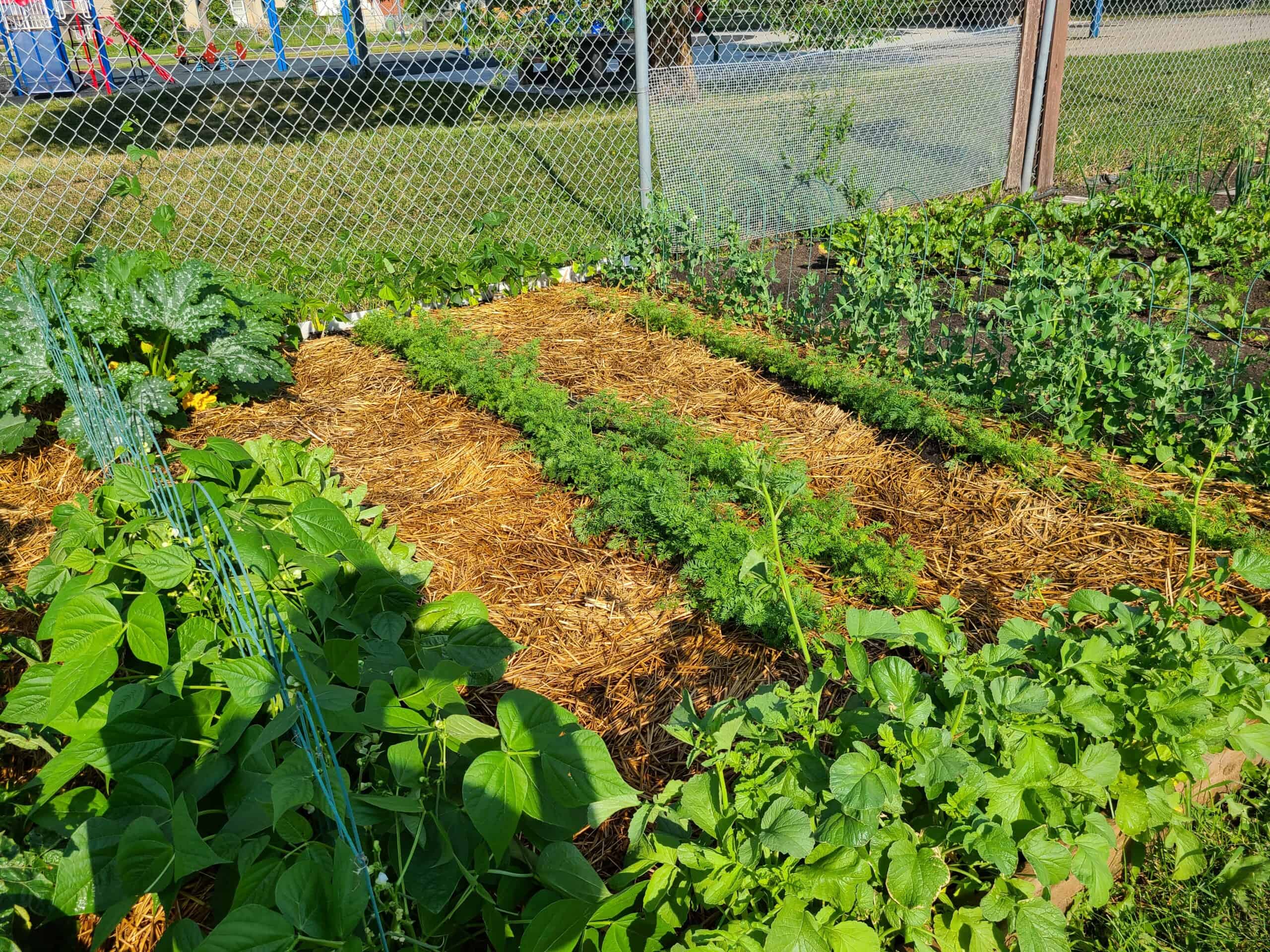Soil: the holy grail of gardening
Gardening doesn’t start with plants, it starts with soil.
Soil is part of a fascinating ecosystem of insects, bacteria, fungi, and microbes in a complex relationship with plants, air, and water. Vegetables grown in unhealthy soil won’t have the same nutrient levels as food grown in healthy, fertile soil.
You want a soil texture that’s loamy, which you get when you have a balanced amount of sand, clay, and silt particles. Our soil in Edmonton tends to have a lot of clay. The most important part of fertile soil is organic matter, which is living and dead plant and animal matter in various stages of decomposition. Organic matter aka compost also helps break up clay soil (edmontonhort.com/compost).
According to Janet Melrose and Sheryl Normaneau in The Prairie Gardener’s Go-to for Soil, humus (the organic component of soil) “is created in situ in the garden, through the marvelous properties and processes of soil, over the course of years.” You cannot buy it.
So, how do you create great soil?
Disturb the soil as little as possible.
According to the experts, mess with soil as little as possible. Yes, this means no tilling and ideally no digging, either. The soil has its own food web. The microlife lives in layers. Turning it over messes up these layers.
Use a broadfork to loosen the soil without disturbing the soil strata (layers), although this can be difficult to do if your soil has a lot of clay or is very dense and hard. Explore sheet mulching or lasagna gardening where you build up soil using layers of materials; however, it does take some time.
Also, don’t walk on your beds (planting area). Create paths and walkways instead. Most importantly, don’t dig or walk on your soil too early in the spring or when it’s wet.
Keep soil planted or covered as much as possible.
Bare soil is dead soil. Healthy soil needs plant roots. You need to feed all the tiny creatures in the soil with plants and organic matter, then they will provide nutrients to the plant roots.Plant in wider beds covering the whole area (check out square foot gardening) rather than rows. For instance, in a 32-inch wide bed you may be able to straddle 36 to 48-inch beds that you can reach into without stepping in. Build paths according to your needs, but an 18-inch path is adequate for foot access and gives you more soil to plant and cover.

You can also keep the soil covered by planting fall plants between summer plants, and shallow-rooted plants by deep-rooted plants. Try succession planting where you plant fast growing crops at intervals during the growing season. Grow flowers in and around your vegetables. Plant cover like legumes, clover, buckwheat, or rye. Cover crops help block weeds and improve the soil. Cut down the cover crop when about half of the crop is flowering. Let it decompose on the soil to provide maximum benefit.
Add organic matter as needed.
In nature, organic matter is continually being added through the life and death of plants and animals. Janet Melrose states, “Keeping our plant debris within our gardens should be our goal.” It’s best to leave your plant roots in the soil. Use a stirrup hoe to chop weeds that aren’t in seed, which leaves their roots in the soil, and let the tops compost on the soil. When plants are done for the season, just chop and drop the plant material to decompose and return the nutrients to the soil.
It’s organic matter that creates water-holding capacity in your garden soil. Cover bare soil and add mulch around plants. Organic mulch includes items like shredded leaves, grass clippings, wood chips, straw, compost, and even newspaper. It will decompose and have to be replaced, but it adds that organic matter to the soil.
Compost is food for your soil and improves soil structure, but like everything else, moderation is key. Plant-based compost is better than manure-based compost, which is high in phosphorus.
Sprinkle or mix in an inch or two of compost on landscape beds and up to three inches in vegetable beds.
Practice plant diversity and rotate crops.
Our bodies thrive on a diverse diet because it brings us the variety of micronutrients we need. The same goes for the soil. Plants impact soil differently due to their root systems, the nutrients they use and give, and the pests or weeds they attract or repel. If you want healthy soil, don’t plant the same thing in the same place year after year.
Crop rotation can be challenging in small garden spaces. Try using a mix of ground beds, raised garden beds, and pots. Change what you plant from year to year or co-ordinate with neighbours and friends and swap veggies!
By working with the soil and adding nutrients to it, your garden will flourish.







